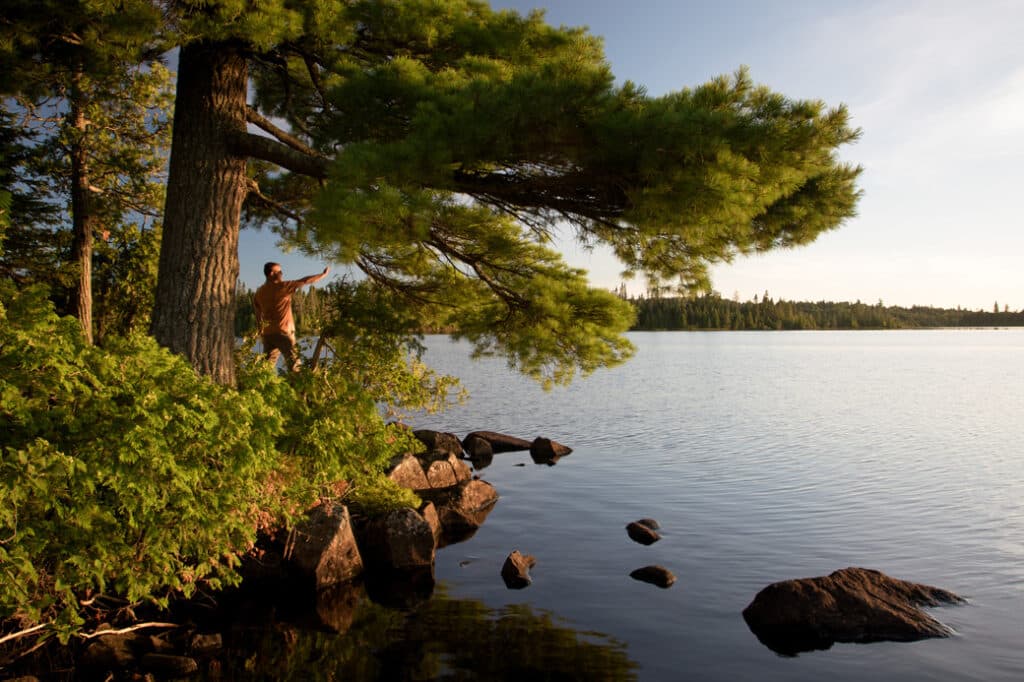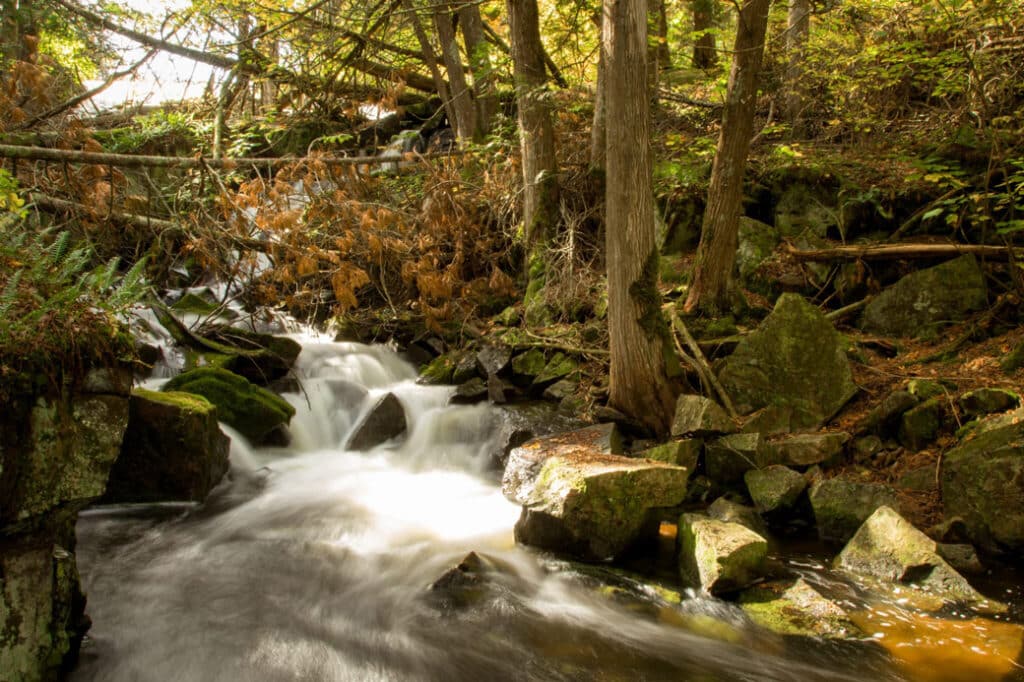The oldest known tree in Minnesota grows in the Boundary Waters Canoe Area Wilderness (BWCAW). The elder tree is over 1,000 years old and is informally known as the “Legacy Cedar.” It has stood the test of time with roots sunk deep in a quiet bay near the Canadian border. Although past logging practices obliterated numerous trees, remnants of these ancient giants still linger in isolated pockets within the wilderness. For centuries they have quietly stood guard over remote forested areas, inspiring awe and wonder to anyone lucky enough to pass by. Now, forest managers contemplate the trees’ vulnerability to warming conditions amidst a changing climate.
The million-acre wilderness is a transitional zone. It’s where species from the boreal and temperate hardwood forests blend. It’s a perfect habitat for old-growth cedars and other species. For example, some of the oldest trees include the white and red pine. These trees can live up to 400 years.

Connection to the original inhabitants
The original inhabitants of the wilderness valued the old trees. In Ojibwe culture, people utilize trees like white cedar in various applications because they are an important resource. The cedar is known as Nookomis Giizhik or “Grandmother Cedar”. In A Guide to Four Medicines for All People, the author notes, “Cedar is used to purify the home; it also has many restorative medicinal uses and is rich in Vitamin C.” Because it’s resistant to decay, it’s been used for ages as a building material.
In the days preceding European contact, the Annishinaabe people stewarded the land through small, selective wildfires. In addition to maintaining trails, the burns promoted the growth and benefited plants.

Logging impact
Pine timber logging began in the wilderness in the late 1890s and continued into the 1920s. Early logging was accomplished by utilizing developing roads and railroads. The frozen ground in the winter allowed logging companies to build ice roads, providing better access to timber stands.
Lee Frelich, Director of the University of Minnesota Center for Forest Ecology estimates that roughly 400,000 acres have never been logged. This takes into account natural disturbances and incidents like the blowdown of 1999. Eventually, nearly 60% of the million-acre wilderness was logged.
Trees susceptible to climate
Researchers continue to monitor warming trends and the impact it has on various tree species in the Superior National Forest. In a recent article by the Star Tribune, Frelich adds, “Droughts and extreme heat diminish a tree’s ability to defend itself against predators. Shorter winters allow pests to hatch earlier and hit harder. The arborvitae leafminer, a native moth, damaged 4,000 acres of northern white cedar in a 2018 outbreak, according to the Minnesota Department of Natural Resources.”
Finally, he notes that if the climate temperatures go up one degree Celsius they’ll be ok. However, he cautions, that if it gets warmer, it will be unlike anything the trees have experienced in the past million years.
Honoring old trees
Earlier this year, the White House proposed to amend management plans to preserve and protect old-growth forests, including those within the Superior National Forest.
To prevent undue stress, the locations of ancient trees are closely guarded. The oldest known cedar grows far north, along Minnesota’s remote border. However, if you happen to come across one on your travels, consider it a gift. The effort to get there will be worth it. As cedars age, they become gnarled and dense. Old red and white pines grow extremely tall. Across lakes, they stand out as quiet sentinels, higher than the species surrounding them. They’ve quietly observed those of us passing through time.

Learn more:
- This ancient tree is one of the oldest in Minnesota – Star Tribune
- Boundary Waters Wilderness – Native Tree Society
- Forests – Old Growth – University of Minnesota/MNDNR
- What is Wilderness? – MNDNR
- Eastern White Pine – USFS

Wilderness guide and outdoorswoman Pam Wright has been exploring wild places since her youth. Remaining curious, she has navigated remote lakes in Canada by canoe, backpacked some of the highest mountains in the Sierra Nevada, and completed a thru-hike of the Superior Hiking Trail. Her professional roles include working as a wilderness guide in northern Minnesota and providing online education for outdoor enthusiasts.

